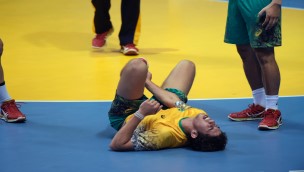Sprained wrist
It is easy to sustain a sprained wrist, but the good news is that the prognosis is excellent for a complete recovery.

'Sprain' is a term used when the injured person shows very little symptoms and X-ray images do not uncover any damage to the skeleton.
A sprained wrist can be caused by falling on an outstretched hand, sustaining a direct impact against the wrist, or twisting the wrist at the same time as it is bent or outstretched.
A sprained joint usually concerns damage to soft tissue (muscles, fat, blood vessels) or to the joint capsule, which helps to hold the joint in place. Swelling and pain often accompanies a sprain, but this tends to lessen within a few days.
Signs and symptoms
A sprained wrist typically brings on varying degrees of pain, tenderness, swelling, and reduced mobility.
Diagnosis
If the swelling, pain, and stiffness subside after a few days then it is not necessary to see a doctor. On the other hand, if there is discolouration, severe swelling, visible deformity (that the joint appears 'skewed'), or if the wrist feels unstable you should have it assessed with X-ray imaging at an emergency clinic.
Treatment
You should start treatment according to the PRICE principles immediately after the injury occurs. We recommend resting the injured site for a few days.
Training should be gradually resumed, and it may be useful to use tape or some form of support brace when you first return to sporting activities.
Prognosis
The prognosis for a minor sprain is good. If other injuries have been ruled out, you should be able to return to sport within 1-2 weeks.


